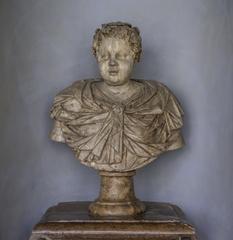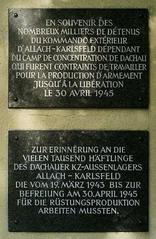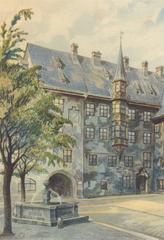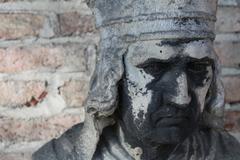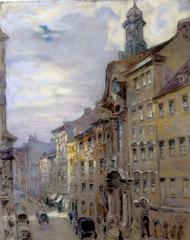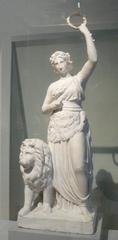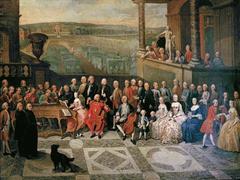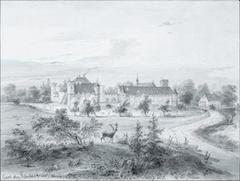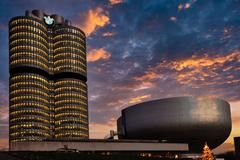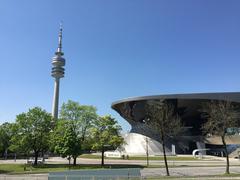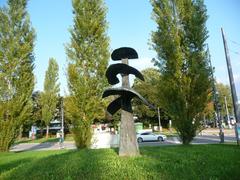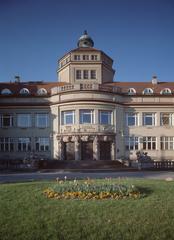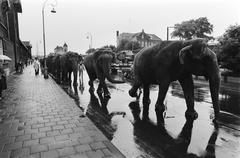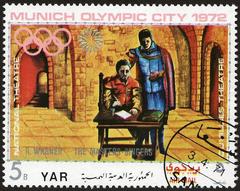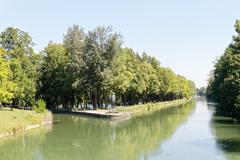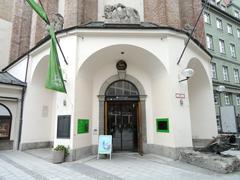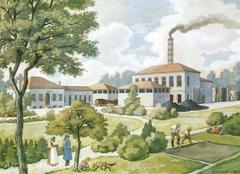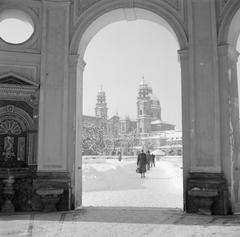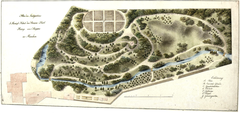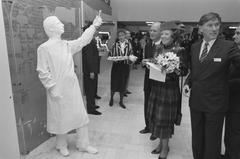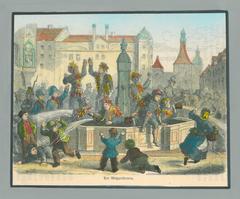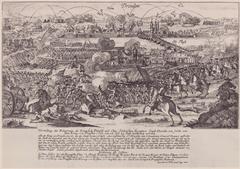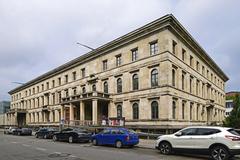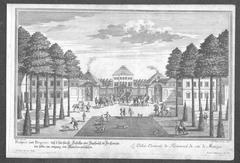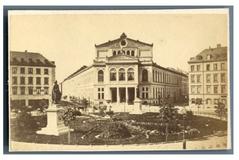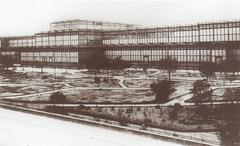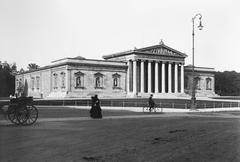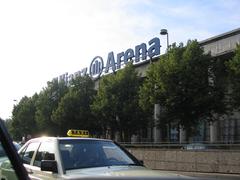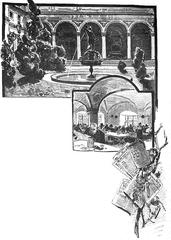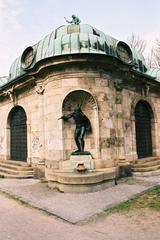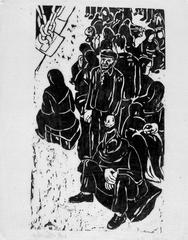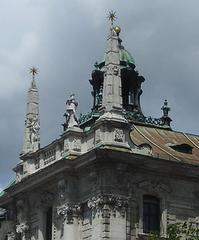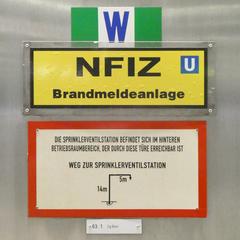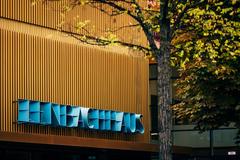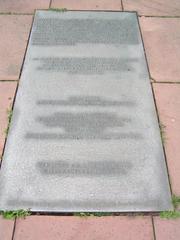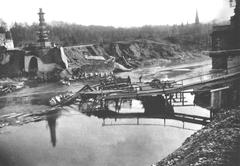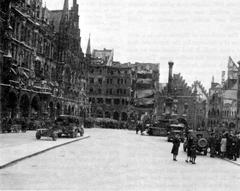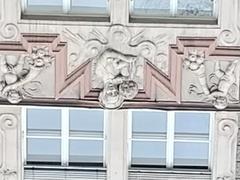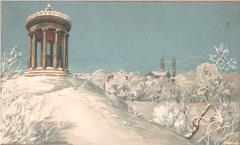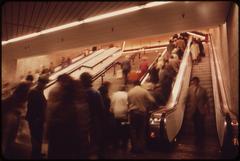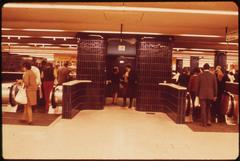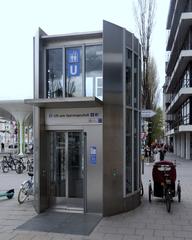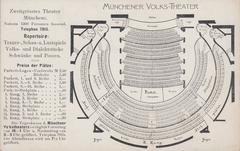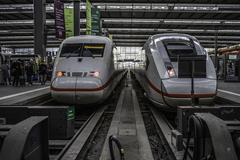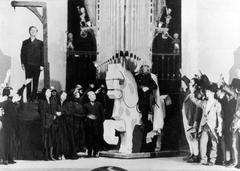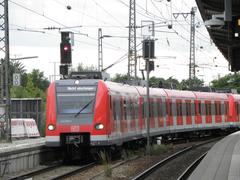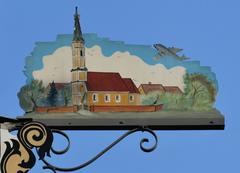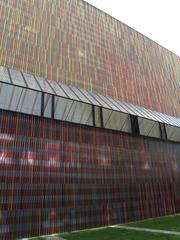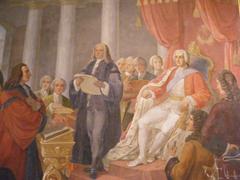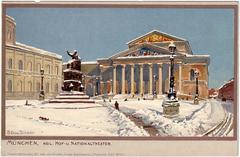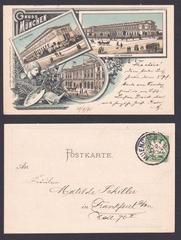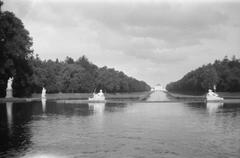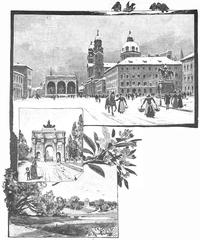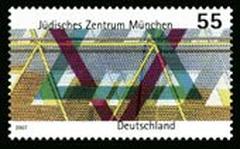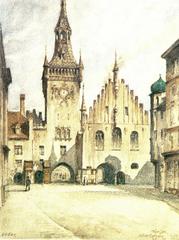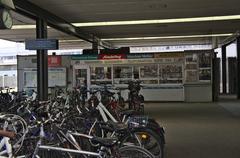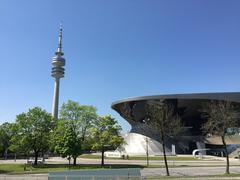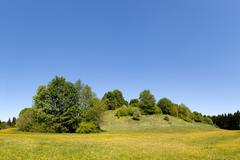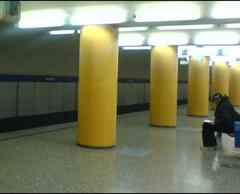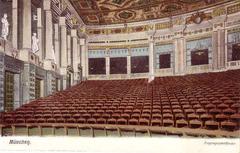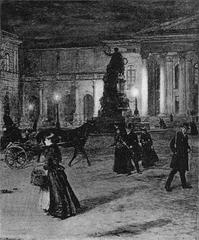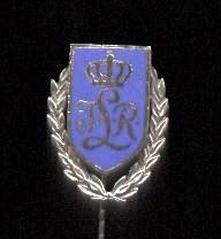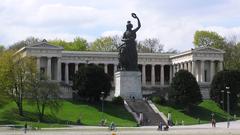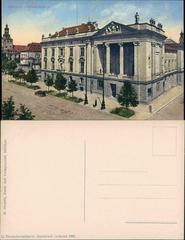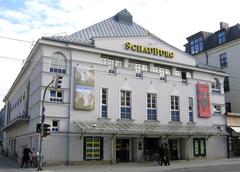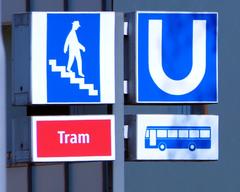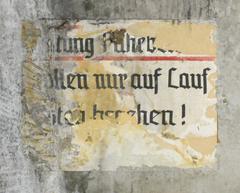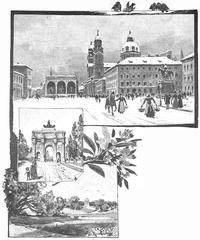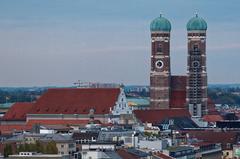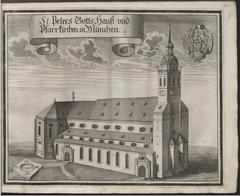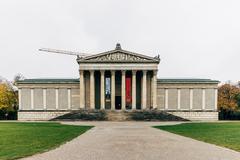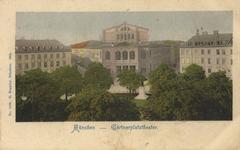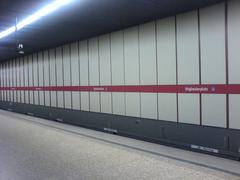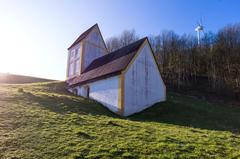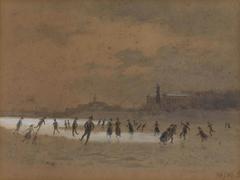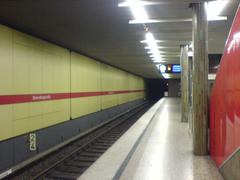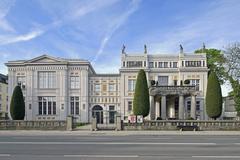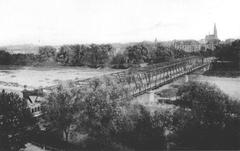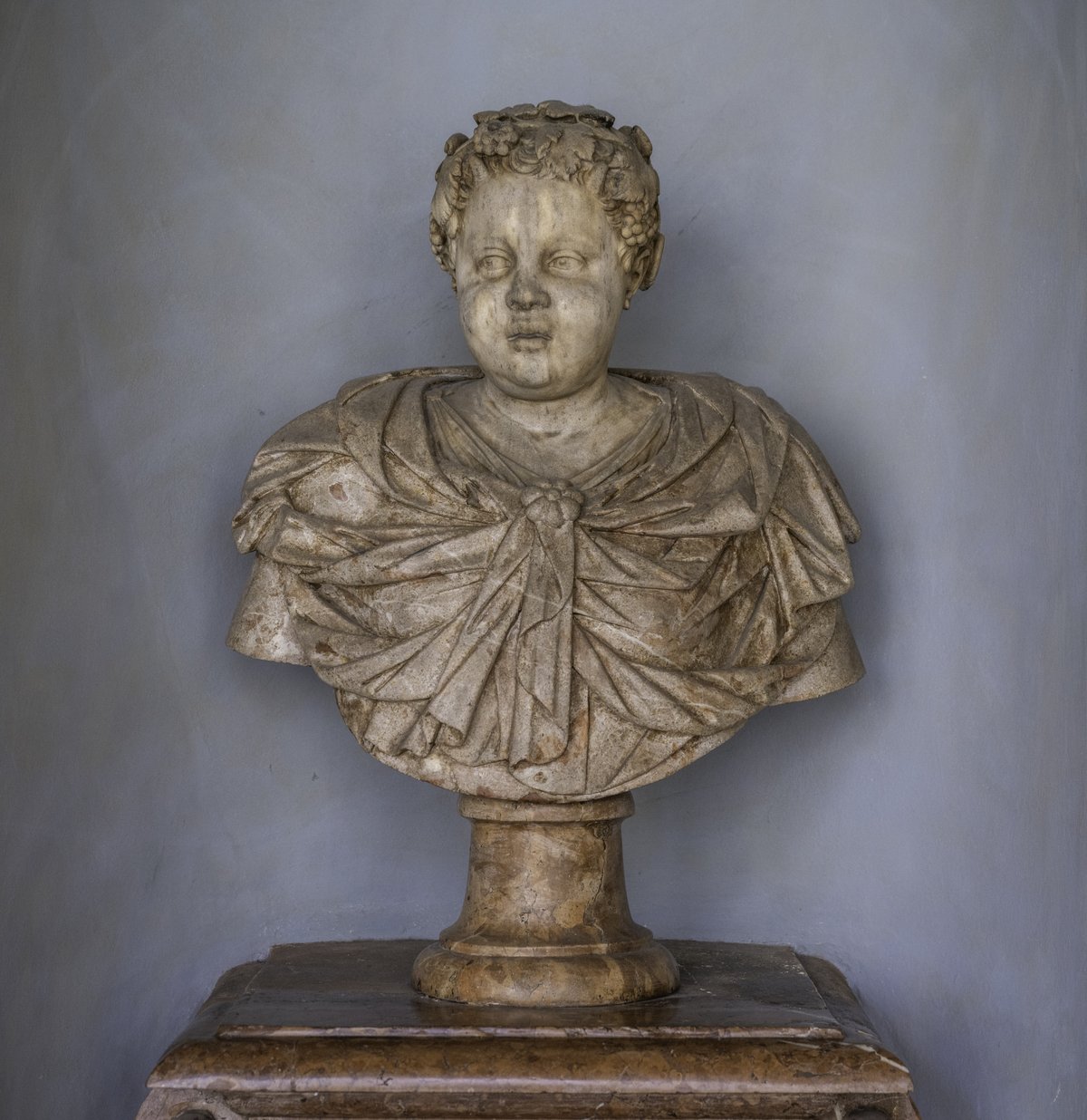
Visiting Herkulessaal: Hours, Tickets, and Historical Insights
Date: 17/07/2024
Introduction
Nestled within the historic Residenz, the former royal palace of the Bavarian monarchs, the Herkulessaal (Hercules Hall) stands as a beacon of cultural and historical significance in Munich, Germany. This iconic concert hall, constructed between 1951 and 1953, embodies the resilience and cultural revival of Munich following the devastation of World War II. Designed by the esteemed architect Hans Döllgast, the Herkulessaal seamlessly blends modern architectural elements with the historical context of the Residenz, featuring a neoclassical style known for exceptional acoustics (Munich Residenz, Hans Döllgast). The hall’s rich history and architectural beauty make it a must-visit destination for classical music enthusiasts and history buffs alike. Serving as the primary concert venue for the Bavarian Radio Symphony Orchestra, one of the world’s leading orchestras, the Herkulessaal continues to play a crucial role in Munich’s vibrant cultural landscape (Bavarian Radio Symphony Orchestra). Throughout this guide, we will explore the hall’s history, cultural significance, visitor information, and much more, providing a comprehensive resource for anyone planning to visit this magnificent venue.
Table of Contents
- Introduction
- History of Herkulessaal
- Historical Significance
- Role in Munich’s Cultural Landscape
- Visitor Information
- Renovations and Modernization
- Notable Performances and Events
- Impact on Local and International Music Scene
- Preservation Efforts
- Frequently Asked Questions (FAQ)
- Conclusion
History of Herkulessaal
Origins and Construction
The Herkulessaal, or Hercules Hall, is a prominent concert hall located in the Residenz. The Residenz itself has a rich history dating back to the 14th century, but the Herkulessaal was constructed much later, in the mid-20th century. The hall was built between 1951 and 1953, during the post-World War II reconstruction period, to replace the original Hercules Hall that was destroyed during the war (Munich Residenz).
Architectural Design
The design of the Herkulessaal was overseen by architect Hans Döllgast, known for his work in reconstructing war-damaged buildings. Döllgast’s approach was to blend modern architectural elements with the historical context of the Residenz. The hall features a neoclassical style with clean lines and a focus on acoustics, making it an ideal venue for classical music performances. The interior is adorned with marble and wood, creating an elegant yet functional space (Hans Döllgast).
Historical Significance
The Herkulessaal holds significant historical value as it symbolizes the resilience and cultural revival of Munich after the devastation of World War II. The hall was inaugurated in 1953 with a performance by the Bavarian State Orchestra, marking the beginning of a new era for the city’s cultural scene. Over the years, it has hosted numerous prestigious events, including performances by world-renowned orchestras and soloists (Bavarian State Orchestra).
Role in Munich’s Cultural Landscape
Since its opening, the Herkulessaal has played a crucial role in Munich’s cultural landscape. It serves as the primary concert venue for the Bavarian Radio Symphony Orchestra, one of the leading orchestras in the world. The hall’s exceptional acoustics and intimate setting make it a favorite among both performers and audiences. It has also been the venue for various cultural and political events, further cementing its status as a key institution in Munich (Bavarian Radio Symphony Orchestra).
Visitor Information
Visiting Hours and Tickets
The Herkulessaal is open to visitors throughout the year. Visiting hours typically align with scheduled performances and events. It is advisable to check the official website or contact the venue directly for the most up-to-date information on visiting hours and ticket availability. Tickets for performances can be purchased online, at the box office, or through various authorized ticket vendors.
Travel Tips
The Herkulessaal is centrally located in Munich, making it easily accessible by public transportation. Visitors can take the U-Bahn or S-Bahn to the Marienplatz station, followed by a short walk to the Residenz. Parking facilities are also available nearby for those traveling by car.
Nearby Attractions
Visitors to the Herkulessaal can explore other nearby attractions such as the Residenz Museum, the Cuvilliés Theatre, and the beautiful Hofgarten. These sites offer a deeper insight into Munich’s rich cultural and historical heritage.
Accessibility
The Herkulessaal is designed to accommodate visitors with disabilities. The venue is equipped with ramps and elevators, and accessible seating is available. It is recommended to inform the venue in advance of any specific accessibility requirements.
Renovations and Modernization
In the decades following its construction, the Herkulessaal has undergone several renovations to maintain its status as a premier concert hall. The most significant renovation took place in the early 2000s, focusing on updating the acoustics and modernizing the facilities while preserving the hall’s historical integrity. These efforts have ensured that the Herkulessaal remains a top choice for classical music performances in Munich (Herkulessaal Renovation).
Notable Performances and Events
The Herkulessaal has been the stage for many memorable performances and events. Some of the most notable include:
- Leonard Bernstein: The legendary conductor and composer Leonard Bernstein conducted several concerts at the Herkulessaal, leaving a lasting impact on Munich’s music lovers (Leonard Bernstein).
- Herbert von Karajan: Another iconic figure in classical music, Herbert von Karajan, also graced the stage of the Herkulessaal, further enhancing its reputation as a world-class concert venue (Herbert von Karajan).
- Munich Philharmonic: The Munich Philharmonic has performed numerous concerts at the Herkulessaal, contributing to its rich musical heritage (Munich Philharmonic).
Impact on Local and International Music Scene
The Herkulessaal’s influence extends beyond Munich, impacting both the local and international music scenes. It has been a platform for emerging artists and established musicians alike, fostering a vibrant cultural exchange. The hall’s reputation for excellence has attracted audiences from around the world, making it a significant cultural landmark in Germany (Cultural Landmarks in Germany).
Preservation Efforts
Preserving the Herkulessaal’s historical and cultural significance has been a priority for local authorities and cultural organizations. Efforts to maintain and restore the hall are ongoing, ensuring that future generations can continue to enjoy its unique blend of history and modernity. These preservation efforts highlight the importance of the Herkulessaal as a symbol of Munich’s cultural resilience and artistic excellence (Preservation Efforts).
Frequently Asked Questions (FAQ)
Q: What are the visiting hours for the Herkulessaal? A: Visiting hours typically align with scheduled performances and events. It is advisable to check the official website or contact the venue directly for the most up-to-date information.
Q: How can I purchase tickets for performances at the Herkulessaal? A: Tickets can be purchased online, at the box office, or through various authorized ticket vendors.
Q: Is the Herkulessaal accessible for visitors with disabilities? A: Yes, the venue is equipped with ramps and elevators, and accessible seating is available. It is recommended to inform the venue in advance of any specific accessibility requirements.
Q: What are some nearby attractions to visit in Munich? A: Nearby attractions include the Residenz Museum, the Cuvilliés Theatre, and the Hofgarten.
Conclusion
The Herkulessaal in Munich is more than just a concert hall; it is a testament to the city’s rich cultural heritage and its ability to rebuild and thrive after periods of adversity. From its post-war reconstruction led by Hans Döllgast to its current status as a premier venue for classical music, the Herkulessaal symbolizes resilience and cultural excellence (Herkulessaal Renovation). The hall has hosted numerous prestigious performances, including those by Leonard Bernstein, Herbert von Karajan, and the Munich Philharmonic, solidifying its reputation in the international music scene (Leonard Bernstein, Herbert von Karajan, Munich Philharmonic). Its exceptional acoustics and intimate setting continue to attract audiences and performers from around the world. Preservation efforts ensure that the Herkulessaal remains a cherished cultural landmark, while ongoing modernization efforts keep it at the forefront of concert hall standards. Whether you’re a classical music enthusiast or a tourist exploring Munich’s historical sites, the Herkulessaal offers a unique blend of history, architecture, and cultural significance that is sure to enrich your visit. For more information and updates, follow the official websites and stay connected through social media (Cultural Landmarks in Germany, Preservation Efforts).
